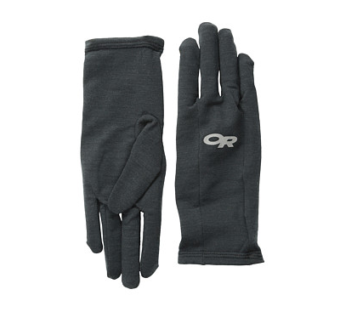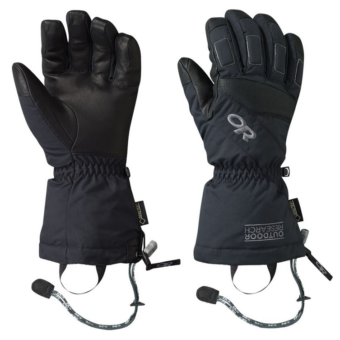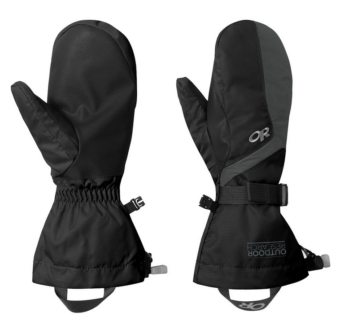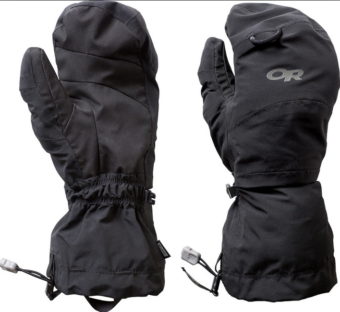We spend a lot of time thinking about which layers to buy for our legs and torso, but often times the hands get left out of the mix. Since we layer our clothing on the rest of our body, it makes sense to do so on our hands as well. Here are a few options for layering a combination of gloves and mittens to keep your hands dry and toasty in the backcountry.
Although we use the word “layering”, we are really referring to the different glove and mitten layers that we wear throughout an adventure. Unlike our torso, we rarely add one layer on top of another. Why you ask? The answer is simple. Our hand is the one source of heat so the glove or mitten is doing it’s best to trap the heat and warm the air space around your hand. If you fill that air space with glove material, there is less air to heat and your hands will actually become colder.

Liner Gloves
Option One:
Bare Handed – In my book, this is a layer. If you are in your lightest glove and your hand is still sweating, it’s time to go bare handed and keep your gloves dry!
Light-weight Gloves – For the approach and below treeline. These could be liner gloves or just something lighter than your heavy-weight glove.
Heavy-weight Gloves – When the lightweight glove isn’t cutting it and you need something warmer. These are not to be worn over another glove.
Insulated Mittens – A mandatory item in the colder months. I hardly ever wear my mittens but I consider them my emergency layer. When all else fails, my mittens will keep me warm! Mittens are inherently warmer than gloves because you have more air space to heat and they keep your fingers together in one space. These are not to be worn over gloves.

Heavy-weight Gloves
Option Two:
Bare Handed – Same as above.
Liner Gloves – For the approach and below treeline. True liner gloves also work well under mittens. Should you need to remove your mitten to tie a shoelace or tighten a crampon, your hands will still have some protection from the elements.
Heavy-weight Gloves – When the lightweight glove isn’t cutting it and you need something warmer. These are not to be worn over liner gloves.
Insulated Mittens – A mandatory item in the colder months. I hardly ever wear my mittens but I consider them my emergency layer. When all else fails, the mittens will keep you warm! Mittens are inherently warmer than gloves because you have more air space to heat and they keep your fingers together in one space. These are not to be worn over gloves.

Insulated Mittens
Option Three:
Bare Handed – Same as above.
Liner Gloves – For the approach and below treeline. True liner gloves also work well under mittens. Should you need to remove your mitten to tie a shoelace or tighten a crampon, your hands will still have some protection from the elements.
Heavy-weight Gloves – When the lightweight glove isn’t cutting it and you need something warmer.
Over-Mitts – These are hardly insulated but they provide a shell layer that will protect your gloves from the wind and precipitation. These are to be worn over your heavyweight gloves, much like a hard shell jacket is to be worn over your insulating layer.

Over-mitts (shell only)
The overall goal to bringing several hand layers is to minimize sweating into your gloves. Once they become damp, they will freeze which leads to frozen hands. By utilizing all of these layers at different times, your hands will stay dry and comfortable all day.
Note: Many companies make excellent gloves and mittens. We have found Kinco work gloves to make excellent gloves for a fraction of the cost of some of the big names.

 We are proud to work with the Department of Agriculture, the White Mountain National Forest and the Androscoggin Ranger District where we are authorized outfitter guides.
We are proud to work with the Department of Agriculture, the White Mountain National Forest and the Androscoggin Ranger District where we are authorized outfitter guides.
